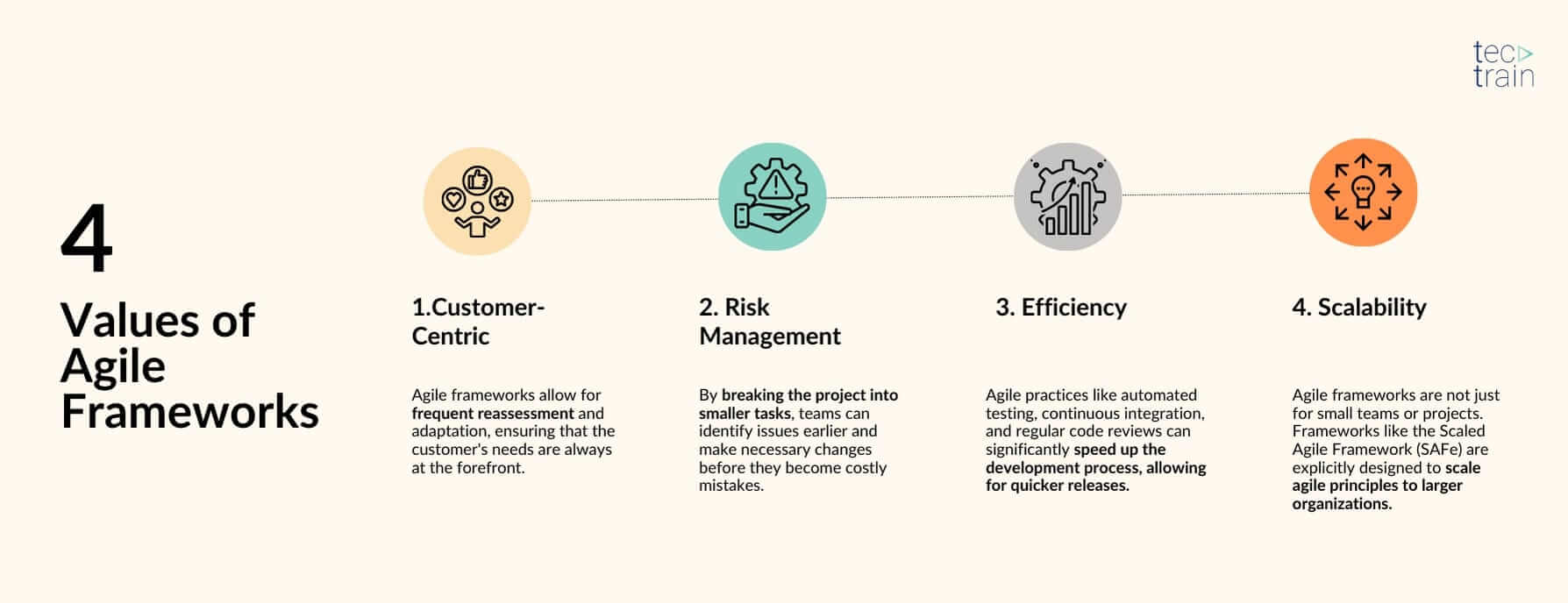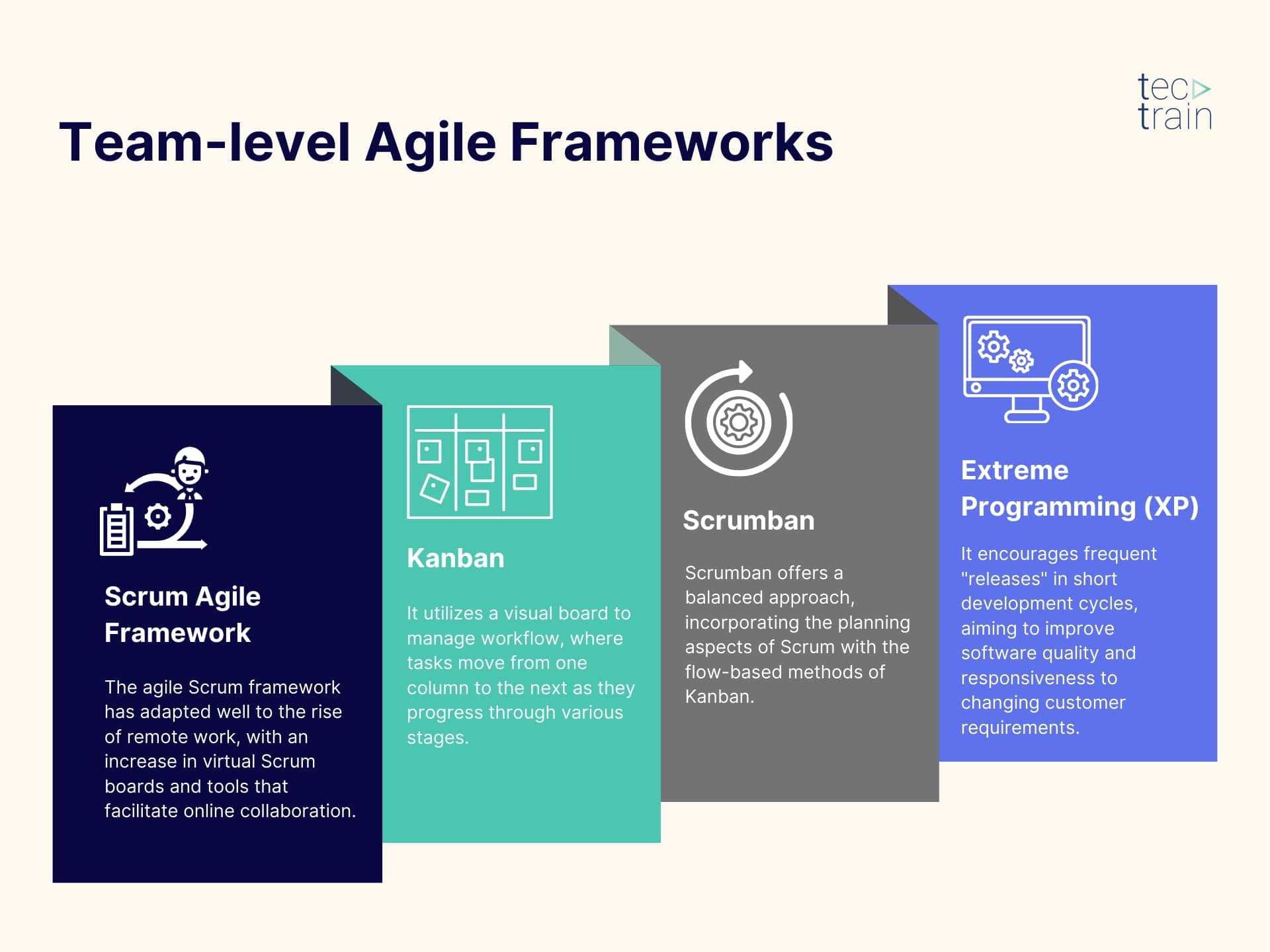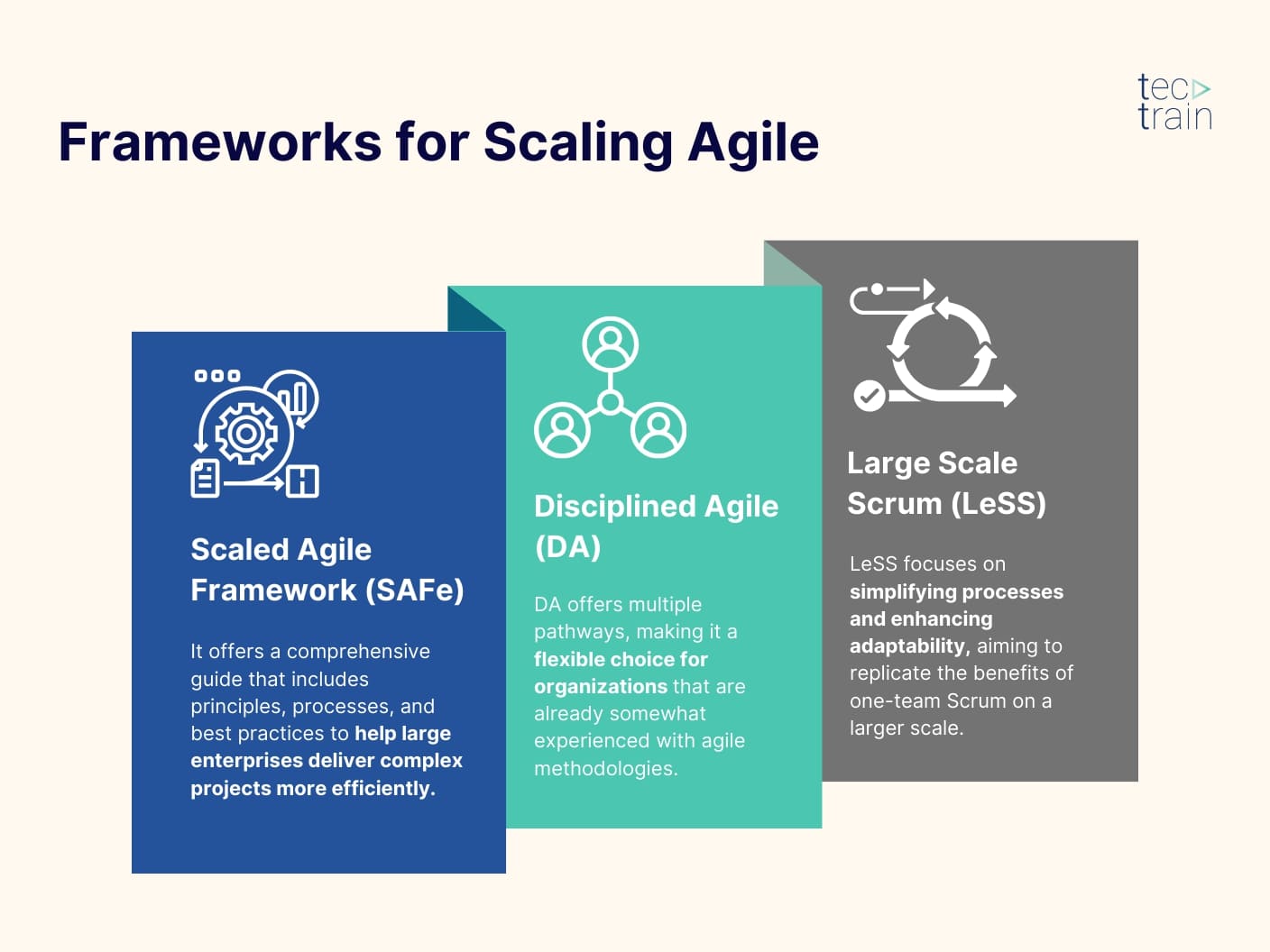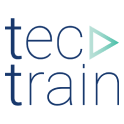Agile Frameworks Overview
Are you on the hunt for ways to make your software development more streamlined and focused on the customer? You've likely come across the term "agile framework," but you might be wondering what it entails and what agile framework examples look like in action.
In this blog post, we'll unravel the complexities of agile frameworks for you. We'll define what an agile framework is, take a deep dive into the leading agile frameworks that are revolutionizing the software architecture field in 2024, and even offer a useful comparison chart to guide you in selecting the framework that aligns with your objectives. Whether you're an agile newbie or looking to polish your existing methods, this post is your go-to resource. So, let's dive in!
Featured Resource:
Agile Working: A Practical Guide
What is the Agile Framework?
The term "agile framework" might sound like industry jargon, but it's actually a straightforward concept with profound implications for software architecture. At its core, it is a set of principles and practices designed to guide teams in the iterative and incremental delivery of high-quality software.
Unlike traditional methods, which often view software development as a linear and fixed sequence of phases, agile frameworks emphasize adaptability, collaboration, and customer focus.
Featured Resource:
Agile Project Management vs. Classic Project Management
The Meaning in Software Architecture
In the realm of software architecture, adopting an agile framework means more than just speeding up development cycles or having daily stand-up meetings. It's about creating a culture where change is not just expected but embraced.
It's about breaking down complex projects into manageable tasks and continuously reassessing and adjusting project goals based on completed work and customer feedback. This adaptability is particularly crucial in today's fast-paced digital landscape, where user needs and market demands can change in the blink of an eye.
Why It's Valuable

- Customer-Centric: Agile frameworks allow for frequent reassessment and adaptation, ensuring that the customer's needs are always at the forefront.
- Risk Management: By breaking the project into smaller tasks, teams can identify issues earlier and make necessary changes before they become costly mistakes.
- Efficiency: Agile practices like automated testing, continuous integration, and regular code reviews can significantly speed up the development process, allowing for quicker releases.
- Scalability: Agile frameworks are not just for small teams or projects. Frameworks like the Scaled Agile Framework (SAFe) are explicitly designed to scale agile principles to larger organizations.
Featured Resource:
Implementing Agility in the Enterprise: Your Practical Handbook
Top Agile Frameworks in Software Architecture for 2023
The agile landscape is ever-evolving, and 2023 is no exception. With a plethora of frameworks to choose from, it can be a daunting task to select the one that best suits your project or organizational needs. To simplify this, we've categorized the top agile frameworks into two main types: Team-level Agile frameworks and frameworks for scaling Agile. Let's take an in-depth look at each.
Team-level Agile Frameworks
- Scrum
- Kanban
- Scrumban
- Extreme Programming (XP)

1- Scrum
Scrum is one of the most renowned frameworks in the agile world. Known for its time-boxed iterations, commonly referred to as "sprints," Scrum typically operates on two-week cycles. It has gained immense popularity for its structured approach, making it a go-to choice for teams that are new to agile methodologies.
➕ Pros:
Scrum is particularly effective for projects where requirements are expected to change frequently. Its structured nature makes it easy to adapt, especially for smaller businesses. Additionally, its versatility allows it to be applied in non-software projects, broadening its scope of usability.
➖ Cons:
While Scrum offers many advantages, it's not without its drawbacks. One of the main criticisms is its rigidity due to fixed sprint cycles. This can sometimes make it less suitable for projects that require a high degree of flexibility.
➡️ Real-World Example:
Spotify serves as an excellent real-world example of Scrum in action. The music streaming giant employs a modified version of the Scrum Agile Framework to manage its software development, demonstrating the framework's adaptability and effectiveness.
2- Kanban
Kanban is another highly popular agile framework that originated in Japan. Unlike Scrum, which operates on fixed time intervals, Kanban focuses on continuous flow and improvement. It utilizes a visual board to manage workflow, where tasks move from one column to the next as they progress through various stages.
➕ Pros:
One of the standout features of Kanban is its flexibility. The framework allows for real-time adjustments, making it ideal for teams with evolving or unpredictable project requirements. Its visual nature also makes it easy to identify bottlenecks and areas for improvement, thereby enhancing overall efficiency.
➖ Cons:
While its flexibility is a strong point, it can also be a drawback. Kanban's less structured approach may lead to scope creep or a lack of focus if not managed carefully. Teams may find it challenging to maintain discipline in the absence of time-boxed iterations like those in Scrum.
➡️ Real-World Example:
Toyota's production system is often cited as the birthplace of Kanban. The automotive giant used Kanban to optimize its manufacturing processes, demonstrating the framework's applicability beyond the realm of software development. Today, many industries have adopted Kanban for its versatility and focus on continuous improvement.
3- Scrumban
Scrumban is a hybrid agile framework that combines elements of both Scrum and Kanban. It's designed for teams that find the structured approach of Scrum too rigid but still seek some level of organization that Kanban's flexibility doesn't fully provide. Scrumban offers a balanced approach, incorporating the planning aspects of Scrum with the flow-based methods of Kanban.
➕ Pros:
Scrumban is particularly beneficial for teams that require a middle ground between the rigidity of Scrum and the looseness of Kanban. It allows for more flexibility in planning and execution while still maintaining a structured workflow. This makes it an excellent choice for teams dealing with rapidly changing requirements or those that are transitioning from a more traditional project management approach to agile.
➖ Cons:
One of the challenges of adopting Scrumban is the learning curve involved in mastering both Scrum and Kanban principles. Teams may initially find it confusing to navigate the nuances of each while trying to integrate them into a cohesive framework. Additionally, because it's a hybrid, it may not offer the full benefits of either Scrum or Kanban when applied independently.
➡️ Real-World Example:
Scrumban has found its way into various industries beyond just IT. For instance, many startups with fast-paced environments and rapidly evolving requirements have adopted Scrumban to manage their workflows. It provides them with the flexibility to adapt to market changes quickly while maintaining a level of structure to keep projects on track.
4- Extreme Programming
Extreme Programming (XP) is an agile framework that places a high emphasis on engineering practices and customer satisfaction. It encourages frequent "releases" in short development cycles, aiming to improve software quality and responsiveness to changing customer requirements.
➕ Pros:
XP is highly value-driven and focuses on delivering the most critical features first, as defined by customer stories. This makes it particularly beneficial for teams that include both inexperienced and seasoned developers. The framework's focus on technical excellence, including practices like pair programming and test-driven development, ensures high-quality output.
➖ Cons:
One of the potential downsides of XP is that it requires a high level of customer involvement to define requirements and priorities. This can be challenging if the customer or stakeholder is not available or not inclined to participate actively. Additionally, XP's emphasis on frequent releases may not align well with projects that have longer development cycles.
➡️ Real-World Example:
Facebook's early development is a prime example of XP in action. The social media giant used Extreme Programming principles to iterate quickly and adapt to user feedback, enabling it to scale rapidly and become the platform it is today.
Frameworks for Scaling Agile
- Scaled Agile Framework (SAFe)
- Disciplined Agile (DA)
- Large Scale Scrum (LeSS)

1- Scaled Agile Framework (SAFe)
The Scaled Agile Framework, commonly known as SAFe, is designed to provide a structured approach for large organizations aiming to scale agile methodologies beyond small teams. It offers a comprehensive guide that includes principles, processes, and best practices to help large enterprises deliver complex projects more efficiently.
➕ Pros:
One of the key advantages of the agile SAFe framework is its structured methodology, which is particularly beneficial for large enterprises dealing with multiple teams and projects. It provides a unified approach, ensuring alignment and coordination across the organization. This makes it easier to manage dependencies and maintain a consistent vision.
➖ Cons:
While the safe framework agile approach offers many benefits, it's not without its challenges. Its highly structured nature can make it cumbersome and less flexible compared to other agile frameworks. This could be a drawback for projects that require rapid changes or for teams that are used to a more flexible agile environment.
➡️ Real-World Example:
Cisco, a global leader in networking technology, successfully implemented the SAFe framework to improve its software development processes. By adopting SAFe, Cisco was able to improve its productivity by 40%, demonstrating the framework's effectiveness in large-scale, complex environments.
2- Disciplined Agile (DA)
Disciplined Agile (DA) is a hybrid agile framework that offers a toolkit for scalable and adaptable strategies. Unlike other frameworks that provide a single path to agility, DA offers multiple pathways, making it a flexible choice for organizations that are already somewhat experienced with agile methodologies.
➕ Pros:
One of the standout features of DA is its adaptability. It provides a range of options and practices, allowing organizations to customize their agile journey according to their specific needs. This makes it a highly versatile framework, suitable for companies that have unique or complex requirements.
➖ Cons:
While its adaptability is a strong point, it can also be a double-edged sword. The multitude of options available in DA can be overwhelming for teams that are new to agile or for those who prefer a more prescriptive approach. This could lead to analysis paralysis, where teams struggle to make decisions due to the abundance of choices.
➡️ Real-World Example:
DA's focus on sustainability and scalability has made it a popular choice among eco-conscious organizations. For instance, some renewable energy companies have adopted DA to manage their complex, multi-faceted projects, demonstrating the framework's adaptability and wide range of applications.
3- Large Scale Scrum (LeSS)
Large Scale Scrum (LeSS) is an agile framework designed to extend the principles and practices of Scrum to large organizations. Unlike other frameworks for scaling agile, LeSS focuses on simplifying processes and enhancing adaptability, aiming to replicate the benefits of one-team Scrum on a larger scale.
➕ Pros:
One of the main advantages of LeSS is its focus on simplicity and adaptability. It aims to eliminate unnecessary bureaucracy and layers, making it easier for large organizations to adapt to changes quickly. This less prescriptive approach gives teams more freedom and flexibility, which can be particularly beneficial in complex, large-scale projects.
➖ Cons:
The downside of LeSS's simplicity is that it may lack the structure and guidance that some large organizations require, especially those that are new to agile practices. Teams may find it challenging to navigate the framework without the detailed roles and processes that other scaling frameworks like SAFe provide.
➡️ Real-World Example:
LeSS has been successfully adopted in various industries, not just in software development. For example, some large financial institutions have implemented LeSS to manage their complex, multi-team projects. The framework's focus on simplicity and adaptability has enabled these organizations to streamline their processes and improve efficiency.
Conclusion
In summary, there are many different agile frameworks that can be used depending on the situation and requirements. Each framework has its own pros and cons, and it's important to choose the right framework for your project and team.
If you want to learn more about what agile frameworks exist and how they can be used in project management, we recommend our "Scaled Agile Framework" page. Here you will find various SAFe courses, including our "Leading SAFe" course, which teaches you the basics of Agility and SAFe and prepares you for the corresponding SAFe certifications.
And if you also want to expand your knowledge and skills in other IT areas, have a look at our "Academy" page. There you will find a variety of training courses and certifications on various IT topics, including agile methods. We look forward to helping you achieve your career goals!






(5).png)



